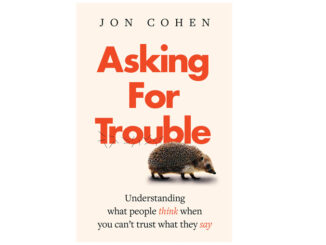By Tom Neveril, President, Storybrand Consulting, Los Angeles, California, tom@storybrandconsulting.com, @tomneveril
When you think about insurance, there’s a good chance you think about the funny brand characters that have flooded the airwaves over the last decade, including Martin (the gecko) from Geico, Flo from Progressive, and Jake from State Farm.
What you probably don’t think about is how much the insurance experience has changed since Martin debuted in 2000. For example, in those days, agents were still on the front line for property and casualty (P&C) insurance companies. Agents sold policies and performed a multitude of other tasks including marketing, risk selection, pricing, and customer service.
Today, about 65 percent1 of auto insurance policies in the U.S. are sold directly to customers. Automated phone service, email, and chatbots are playing an increasingly important role in sales, policy management, and claim interactions. A recent JD Power U.S. Auto Insurance Study2 showed—for the first time ever—that insurance company websites were more influential than agents in producing customer satisfaction.
Regarding the next ten years for the industry, consider this September 2021 analysis from McKinsey & Company3: “A handful of accelerating technology trends are poised to transform the very nature of insurance. In auto insurance, risk will shift from drivers to the artificial intelligence (AI) and software behind self-driving cars. Satellites, drones, and real-time data sets will give insurers unprecedented visibility into the risk around facilities, leading to greater accuracy. Claims processing after natural catastrophes will be automated, infinitely scalable, and lightning fast.”
So, what do these big changes mean for the insurance industry’s market researchers?
As insurance company business models continue to evolve from agent-centric service to include more digital interactions, there are profound implications for market research studies. In this article, I’ll describe a couple of key P&C business objectives that are driving their qualitative research initiatives, and what types of studies are typically most helpful. I’ll also explore the long-standing, fundamental challenge for qualitative studies in this sector, and what methods and skills are necessary for success.
The article is sectioned into three ways that insurance researchers and marketers can help P&C insurance companies transform their business and, ultimately, the industry.
1. Personalizing Their Brand Experiences
As customer service automation spreads throughout the industry, basic coverages like auto and home policies are becoming commoditized. So, insurers are focused on differentiating by providing a more personalized insurance experience around these core products.
The most common tactic is providing more personalized pricing, offers, and discounts based on private customer data. These range from simple (alumni association membership) to more complicated (vehicle sensors that monitor driving habits).
Another common tactic has been to create a seamless omnichannel experience for customers. Insurers have focused on ease of use across websites, mobile apps, and phone service so that customers can easily access their policy information, make updates, manage billing, and report claims in whichever channel they prefer.
Perhaps the most innovative tactic has been the development of new, more lifestyle-oriented coverage lines. The most interesting new offering is comprehensive insurance packages, where multiple complementary coverages are not only bundled, but customizable and integrated for easier policy management.
For example, in 2018, Farmers launched a subsidiary called Toggle Insurance, specifically for modern consumers. Josh LaRoche, research and marketing director at Toggle, explained their strategy in an interview for this article: “We started Toggle with a design-thinking approach. We began by observing younger adults in the broader context beyond just insurance. We wanted to really understand them, their pain points, their problems, and the things we needed to solve for. We started with renters insurance because only 40 percent of consumers had it. Clearly the industry wasn’t meeting their needs. We also noted that 70 percent of our target market has a pet. So, we created pet parent coverage, which provides for liabilities and damages associated with pet ownership in an apartment. We also have a side hustle or micro-business policy, which covers a business that makes no more than $25,000 per year. So, you know, it’s little product lines like that. Completely digital. Seamless, quick, and easy. Getting a quote literally takes seconds, and then you can customize it and see the price changes immediately.”
Today the challenge for insurance brand leaders is that these personalized products must feel easy and intuitive across all communication channels. Insurers can no longer rely upon agents to tailor the explanation of risk scenarios, coverages, and claims processing to customers. The storytelling at the heart of insurance coverage must be explained in a digital format, in ways that will be clear and engaging to all customers.
Implications for Qualitative Researchers
Given the importance of optimizing language and complex concepts, insurance brand leaders are increasingly turning toward agile market research. Agile market research methods are defined by gathering consumer feedback quickly and iteratively, applying technology at any point in the creation, development, or launch of campaigns, products, and other growth initiatives. Examples of helpful methodologies include the standards within UX research: remote usability testing and observation-oriented IDIs.
As Mr. LaRoche explained, “We didn’t take one bite at the apple and spend weeks or months analyzing the data. We used a lot of qual, often with very small sample sizes, asking very specific questions. We’d get answers back in a few days, and those answers would often trigger new research questions. And we would follow those, laddering up as we were building and designing.”
Christina Nathanson, former insights strategy director at AIG, explained a similar approach: “To achieve comprehension across these audiences, we used an iterative process, testing and tweaking language to see what worked. What was great about this is we knew the background of our participants and their prior feedback. We could select people, put them into groups, and then deepen our understanding of their perspectives with deep-dive sessions.”
2. Developing Digital Experiences to Build Long-Term Customer Relationships
Brand loyalty has always been important in the insurance industry, and the traditional agent-centric model reinforced loyalty. Back in the day, changing insurers often required customers to engage in extensive company research, agent interaction, and paperwork. Making matters worse, sometimes leaving an agent meant losing the substantial trust built through claim experiences.
Today, consumers are empowered by technology to get a quote and switch carriers in minutes, so there’s little transactional cost in switching. Moreover, insurers have developed digital apps to help customers navigate their claims experiences. Therefore, customers now seek human interaction primarily to address specific questions or gain advice on an ad hoc basis.
Soon, insurance companies will increasingly rely upon digital-based experiences to help develop lasting emotional connections with customers.
Therefore, insurers want to know what digital marketing concepts resonate within and across generations. What services resonate with each generation? How do the generations differ in their technical capabilities? What technology adoptions are painless across generations? Perhaps most importantly, how do brands remain relevant to customers as they move through different life stages?
A comparable example of a generational challenge is happening in the automotive sector, as generational preferences are changing the long-standing distribution model. Brands like Tesla and Carvana have recognized that Generation Z and millennials think nothing of configuring and ordering a vehicle online, without stepping foot into a dealership. But they’ve also recognized that baby boomers and silent generation shoppers typically insist on a face-to-face interaction when buying a vehicle. Hence, Tesla offers both online ordering and showrooms where buyers can see vehicles and purchase them in person (without the haggling).
Implications for Qualitative Researchers
Insurance brand leaders expect qualitative researchers to be familiar with generational trends and skilled at integrating quantitative trend data into the hypotheses that are explored in qualitative studies. Ethnographic studies are particularly important for understanding how people in different life stages assess the value of insurance.
Ms. Nathanson explained the importance of comparing segments: “The benefit of having multiple audiences (consumers and B2B) in our panel allows us to compare feedback to each other. Seeing the contrast, for example, of how consumers perceived the nomenclature of insurance products and offers compared to our agents, enabled us to improve product descriptions to be accurately understood across audiences with varying levels of insurance knowledge.”
3. Engaging Customers to Think about Insurance More Often
The long-standing challenge for the insurance industry is that people don’t want to think about the bad things that may happen to them. This is why Geico and the other large P&C insurance companies choose to spend $5 billion each year trying to grab our attention with funny advertising.
But the human instinct to repress these negative thoughts also costs insurers in other ways.
When a customer represses thinking about insurance, their coverage may become mismatched with their risks. For example, at the time of purchase, coverages are selected and priced based on information provided by the customer. But after the policy is sold, the customer’s life events and risks are likely to change.
The reality is that insured customers do occasionally discover—often an unpleasant surprise—that they’re over- or under-covered. Invariably this leaves the customer disappointed in their insurance experience and erodes their brand loyalty.
Some insurers have responded to this reality by exploring new technologies that “embed” insurance into products or scrape our financial accounts for changes in assets. But these technologies are in their infancy.
Another response by insurers has been to build other financial products around the basic P&C coverages, so that customers have a sense of accruing value over time. Ultimately, they want to avoid the situation where the only time customers interact with their brand is when they’re in an agitated state, forced to deal with the hassle of updating a policy, or stressed by the need to report a claim.
Implications for Qualitative Researchers
Insurance brand leaders need market researchers to replicate the reality of how customers shop, select, and interact with insurance brands. But customers typically learn about insurance only when they must: when they’re actually shopping for insurance, or when they’re experiencing a claim. In the months or years between these events, their knowledge tends to fade. Lackluster memory recall presents another challenge for qualitative researchers.
Therefore, the ideal methodology for capturing the perceptions and priorities of an informed customer is the longitudinal qualitative study (research that takes place over a long period with the same participants). Building a long-term relationship with respondents increases the number of opportunities to capture authentic, informed responses. This methodology also encourages respondents to dig a bit deeper for researchers.
As Ms. Nathanson explained, “We really built our relationship with the community. Since people don’t really want to talk about insurance, we tried to make the experience more personal. I often ‘spoke’ to the community in video clips introducing questions or exercises and thanked them for prior responses. We also used projective techniques and stimulated discussion with visual metaphors to engage them. As a result, they opened up and shared more. Further, we shared insights of their feedback from surveys and discussions back to them. This demonstrated that we really cared about their input.”
An experienced qualitative consultant, Abby Leafe, principal of New Leafe Research, explained the importance of requiring insurance customers to think about their actual situation. “It’s valuable to ask people to do a little homework and bring their policies with them to an interview or a group. There’s some interesting work to be done there, just asking people, ‘What do you think you have?’ and ‘What is it really doing for you?’ Using that as a mechanism to explore how people make these decisions can be really insightful.”
Mr. LaRoche echoed these comments: “But in property and casualty insurance, of course, people don’t think something bad is ever going to happen to them. When we ask our younger customers, how much coverage do you want for your technology stuff? People say, ‘Oh, okay, well, I do have a phone, I do have these computers, you know, I do have a drone.’ And you know, they’ve moved from the abstract to doing a mental inventory. So, that’s how we try to take it with the insurance conversation, from the abstract to the concrete.”
References:



